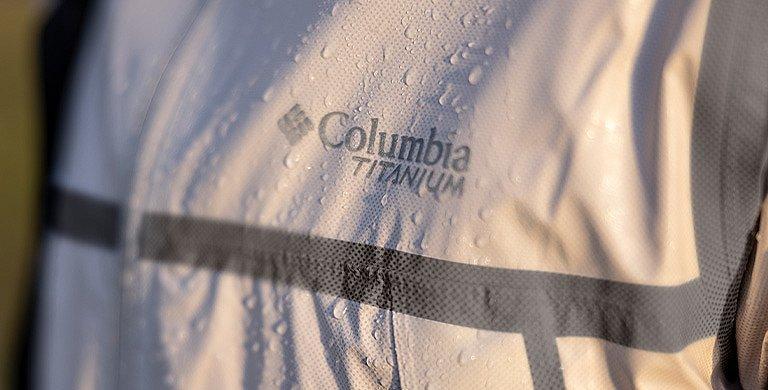TECHNOLOGY
How To Stay Warm This Winter:
Tips For Every Outdoor Activity
BY RACHEL CAVANAUGH
When the cold weather strikes, there are two types of people: those who throw open the doors and run outside to explore the winter wonderland around them and those who watch from the window. If you want to be in the first group, you need to know how to stay warm—it’s the skill set that distinguishes the people who enjoy outdoor winter adventures from the ones who spend the whole time wishing they were back home, sipping cocoa by the fireplace.
Whether you’re already a winter adventurer, or you’re someone who’d like to be but tend to find yourself pulled back in by the lure of cozy fireplaces, there’s something here for you to gain. Below are the best tips for staying warm for every activity, complete with links to the specific gear you need to do it properly.
Whether you’re already a winter adventurer, or you’re someone who’d like to be but tend to find yourself pulled back in by the lure of cozy fireplaces, there’s something here for you to gain. Below are the best tips for staying warm for every activity, complete with links to the specific gear you need to do it properly.
Trail Running & Exercise
- Don’t forget to layer up: A big challenge to exercising outside in the wintertime is that when you first leave the house, it’s freezing. However, by the time you’ve done a few lunges or started down the trail, you’re working up a sweat. This is why layering is such an important part of wintertime cardio. For the coziest results, start your workout wearing a high-quality, exercise-specific jacket and incorporate a breathable midlayer underneath that you can remove when you start getting hot.
- Bring a shell: According to Columbia Sportswear running specialist Derek Scott, a rain shell may be the most important piece of apparel you need for winter running. “It’s lightweight, can pack easily, blocks wind and rain, and will protect you more than a heavier, thicker top.”
- Bring gloves: Whether you’re doing squats in the park or trail running outside the city, you’ll be glad you brought gloves. On top of keeping your overall body temperature warmer, gloves let you touch the ground and other cold surfaces, allowing for more varied workouts.
Hiking & Snowshoeing
- Use a three-layer system: Unlike trail running, in which a two-layer system is typically adequate, hiking and snowshoeing are typically optimized with three-layer systems. Your baselayer manages moisture and sweat, keeping you dry (and thus warmer), while the midlayer provides insulation. Your shell, meanwhile, will protect you from wind and rain.
- Eat more fats and protein: While summer hiking sometimes skews toward heavier carb loads, wintertime adventures are better with a little more fat and protein. Slightly elevating these levels will “provide you that slow burn which your body uses to stay warm,” according to TreeLine Backpacker.
- Don’t be tempted to eat snow: Although it may seem easier to scoop up some snow than to pause to dig out your water bottle, eating snow is not advised. In addition to the chance it’s pretty dirty, it lowers your core body temperature and makes you colder.
Skiing & Snowboarding
- Use reflective heat gear: Instead of wearing a regular jacket that simply traps heat, opt for a ski jacket or snow pants with Omni-Heat™ reflective linings. These work to reflect your own body heat back at you, keeping you much warmer and cozier.
- Pick smarter layers: Skiing and snowboarding is yet another area where layering properly will ensure you’re that warm, happy person on the chairlift and not the guy sitting next to you shivering. Wear your baselayer close to your skin and think hard about whether you need a midlayer—you’ll warm up as you start downhill, so don’t overdo it.
- Don’t pinch pennies: Although it’s always nice to find a bargain, the mountain doesn’t care if you got a deal—and when you’re skiing and snowboarding, dressing wisely is extra important. If this means spending a little more on gear, it’s often worth it to make sure you have the warmest and most dependable jacket and snow pants.
Around The City
- Protect your hands and feet: While things like warm jackets and pants may seem like more obvious wintertime needs, don’t forget the small things. Your hands and feet are critical parts of the stay-warm puzzle—and if your toes are frozen and miserable, your whole body will feel that way. Have a good pair of socks, gloves, and waterproof shoes.
- Never underestimate the power of a scarf: Any bit of exposed skin is a chance for a chill. Scarves and gaiters offer a simple, effective way to keep your neck cozy and add some extra warmth.
- Stay away from cotton: There’s no faster way to feel miserable outside in the winter than by wearing cotton-based clothing. It’s a conduit for moisture-absorption and a recipe for cold, wet clothing. Aim for as much of your clothing as possible to be cotton-free, including t-shirts, sweatshirts, and pants.
Once You're Back Home
Congrats, you made it! Now that you’re back home, don’t forget to pat yourself on the back, crawl into your fuzzy slippers, and treat yourself to a hard-earned Netflix binge.



